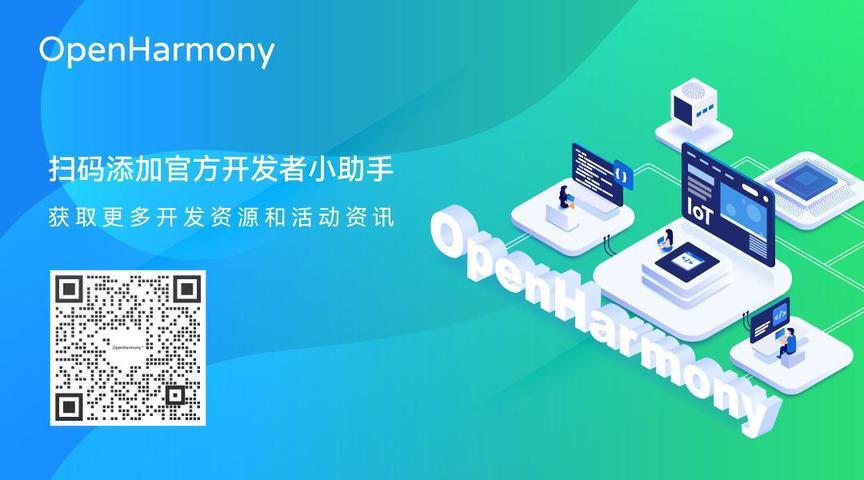前言
在日常开发中,大多 APP 可能根据实际情况直接将 APP 的界面方向固定,或竖屏或横屏。但在使用过程中,我们还是会遇到横竖屏切换的功能需求,可能是通过物理重力感应触发,也有可能是用户手动触发。所以本文主要带大家了解在 OpenAtom OpenHarmony(以下简称“OpenHarmony”)应用开发的过程中,如何在 Stage 模型和 FA 模型下使用对应的接口去完成横竖屏的切换。
本文中 OpenHarmony 版本为 3.2 Beta4,API 版本为 9。开发板为 DAYU200。
FA 模型
FA 模型下,setDisplayOrientation 和 setDisplayOrientation 是切换横竖屏的接口。文档:https://gitee.com/openharmony/docs/blob/master/zh-cn/application-dev/reference/apis/js-apis-inner-app-context.md#contextsetdisplayorientation7
context.setDisplayOrientation
setDisplayOrientation(orientation:bundle.DisplayOrientation, callback: AsyncCallback<void>): void
设置当前能力的显示方向(callback 形式)。
系统能力:SystemCapability.Ability.AbilityRuntime.Core
参数:
示例:
import featureAbility from '@ohos.ability.featureAbility';import bundle from '@ohos.bundle';//FA模型下获取contextvar context = featureAbility.getContext();var orientation = bundle.DisplayOrientation.UNSPECIFIED;context.setDisplayOrientation(orientation, (err) => { console.info("setDisplayOrientation err: " + JSON.stringify(err));});
复制代码
完整代码
import bundle from '@ohos.bundle';import featureAbility from '@ohos.ability.featureAbility';@Entry@Componentstruct Index { @State message: string = '横竖屏切换 ' @State portrait: boolean = true
build() { Row() { Column() { Text(this.message) .fontSize(30) .fontWeight(FontWeight.Bold).onClick(() => { var context = featureAbility.getContext(); if (this.portrait) {
// 横屏 var orientation = bundle.DisplayOrientation.LANDSCAPE; context.setDisplayOrientation(orientation, (err) => { this.portrait = !this.portrait console.info("setDisplayOrientation err: " + JSON.stringify(err)); }); } else { //竖屏 var orientation = bundle.DisplayOrientation.PORTRAIT; context.setDisplayOrientation(orientation, (err) => { this.portrait = !this.portrait console.info("setDisplayOrientation err: " + JSON.stringify(err)); }); } }) } .width('100%') } .height('100%') }}
复制代码
Stage 模型
从 API 9 开始,可以使用 setPreferredOrientation 来切换横竖屏。
文档:
https://gitee.com/openharmony/docs/blob/master/zh-cn/application-dev/reference/apis/js-apis-window.md#setpreferredorientation9
在 Stage 模型中,使用到的主要是 Window(窗口)。在设置横竖屏切换的时候,需要先使用 getLastWindow()、createWindow()、findWindow()中的任一方法获取到 Window 实例,再通过此实例调用对应的方法,本文使用的是 getLastWindow。
Window.getLastWindow
getLastWindow(ctx: BaseContext): Promise<Window>
获取当前应用内最后显示的窗口,使用 Promise 异步回调。
系统能力:SystemCapability.WindowManager.WindowManager.Core
参数:
返回值:
错误码:以下错误码的详细介绍请参见窗口错误码。
let windowClass = null;try { let promise = window.getLastWindow(this.context); promise.then((data)=> { windowClass = data; console.info('Succeeded in obtaining the top window. Data: ' + JSON.stringify(data)); }).catch((err)=>{ console.error('Failed to obtain the top window. Cause: ' + JSON.stringify(err)); });} catch (exception) { console.error('Failed to obtain the top window. Cause: ' + JSON.stringify(exception));}
复制代码
然后就可以使用 setPreferredOrientation 属性。
setPreferredOrientation
setPreferredOrientation(orientation: Orientation): Promise<void>
设置窗口的显示方向属性,使用 Promise 异步回调。
系统能力:SystemCapability.WindowManager.WindowManager.Core
参数:
返回值:
错误码:以下错误码的详细介绍请参见窗口错误码。
let orientation = window.Orientation.AUTO_ROTATION;try { let promise = windowClass.setPreferredOrientation(orientation); promise.then(()=> { console.info('Succeeded in setting the window orientation.'); }).catch((err)=>{ console.error('Failed to set the window orientation. Cause: ' + JSON.stringify(err)); });} catch (exception) { console.error('Failed to set window orientation. Cause: ' + JSON.stringify(exception));}
复制代码
完整代码
import Window from '@ohos.window'import common from '@ohos.app.ability.common';@Entry@Componentstruct ArkUIClubTest { private portrait: boolean = true build() { Stack() { Button("横竖屏切换") .onClick(() => { this.changeOrientation() }) } .width('100%') .height('100%') } private changeOrientation() { let windowClass = null; //获取上下文 //var context = getContext(this) as any // 获取上下文,使用common模块 var context = getContext(this) as common.UIAbilityContext; let promise = Window.getLastWindow(context); promise.then((data) => { windowClass = data; if (this.portrait) { //切换成横屏 let orientation = Window.Orientation.LANDSCAPE; windowClass.setPreferredOrientation(orientation, (err) => { }); this.portrait = !this.portrait console.info('Succeeded in obtaining the top window. Data: ' + JSON.stringify(data)); } else { //切换成竖屏 let orientation = Window.Orientation.PORTRAIT; windowClass.setPreferredOrientation(orientation, (err) => { }); this.portrait = !this.portrait console.info('Succeeded in obtaining the top window. Data: ' + JSON.stringify(data)); } }).catch((err) => { console.error('Failed to obtain the top window. Cause: ' + JSON.stringify(err)); }); }}
复制代码
总结
本文带大家使用对应的接口,在 Stage 模型和 FA 模型下完成了横竖屏的切换。其中还涉及到了上下文的获取:Stage 模型用(getContext(this) as any),FA 模型(featureAbility.getContext()),大家可以在此基础上利用生命周期的回调,在合适的地方完成对应的操作。




















评论